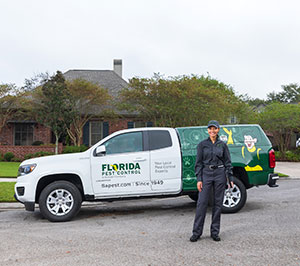Reliable A1 Bed Bug Treatment in Charlotte - Safe and Proven Techniques
Reliable A1 Bed Bug Treatment in Charlotte - Safe and Proven Techniques
Blog Article
Bed Insect Treatment Breakdown: Contrasting Chemical Vs. Non-Chemical Solutions
In the world of insect control, especially when taking care of the persistent problem of bed pests, the option in between chemical and non-chemical therapy options can be a pivotal one. Both techniques supply distinctive advantages and downsides, influencing variables such as efficiency, safety and security considerations, and total price. By checking out the nuanced information of each technique, a more clear understanding of which path to go after in dealing with a bed insect infestation can be achieved.
Performance of Chemical Treatments
Chemical therapies for bed insect problems have been commonly identified for their potent and quick effectiveness in getting rid of these pests. When thinking about the performance of chemical therapies, it is vital to recognize that they can offer a extensive and quick service to a bed bug issue.
Additionally, chemical treatments have the benefit of offering residual results, meaning that they can proceed to get rid of bed pests also after the initial application. This recurring action is particularly helpful in combating any kind of possible re-infestations. In addition, the rapid activity of chemical treatments can bring relief to people facing serious bed bug problems, enabling them to reclaim control of their home swiftly.
Security Worry About Chemical Solutions
One vital facet that needs careful factor to consider when using chemical solutions for bed insect therapy is ensuring the safety of passengers and the atmosphere. Exposure to certain chemicals made use of in bed pest therapies can lead to breathing issues, skin irritation, or various other adverse responses, specifically in people with pre-existing conditions or level of sensitivities.
Moreover, the environmental influence of chemical remedies is one more substantial factor to consider. Some pesticides utilized in bed bug therapies may be dangerous to useful pests, wild animals, and environments if they leach into the dirt or water supply. It is important to utilize chemical therapies sensibly, following safety and security standards, and considering less harmful alternatives to minimize these dangers and make certain the reliable and secure monitoring of bed pest problems.
Advantages of Non-Chemical Strategies
Taking into consideration the possible safety and security issues and environmental impact connected with chemical remedies for bed insect therapy, discovering non-chemical approaches provides an encouraging choice with several unique benefits. Non-chemical therapies are eco pleasant, as they do not add to air or water contamination, making them a sustainable selection for bug control.
Furthermore, non-chemical options can be efficient in targeting bed pests, including hard-to-reach areas where chemical therapies might not permeate. Methods such as heat treatment, vacuuming, vapor cleansing, and cushion encasements offer detailed eradication without the use of hazardous chemicals. Additionally, non-chemical methods can be less disruptive, needing very little preparation and enabling quicker reentry right into dealt with locations. On the whole, opting for non-chemical bed pest therapy approaches not only prioritizes safety and security and environmental management but also makes certain effective and detailed insect control.
Limitations of Non-Chemical Treatments

Additionally, non-chemical treatments often require several applications to achieve successful removal. This can be lengthy and might not always guarantee complete elimination of all bed bugs and their eggs, especially in hard-to-reach or surprise locations.
Additionally, the success of non-chemical therapies greatly relies upon proper implementation and thoroughness, which can be testing for people without professional competence. Inadequate application of non-chemical approaches may cause insufficient eradication, bring about relentless invasions and the need for extra treatments.
As a result, while non-chemical therapies have their benefits, it is important to acknowledge these restrictions and consider them when identifying one of the most reliable strategy for taking care of bed insect invasions.
Expense Contrast: Chemical Vs. Non-Chemical Options
Provided the restrictions linked with non-chemical treatments, a necessary element to examine in the context of bed pest administration is the expense contrast in between chemical and non-chemical options. In comparison, non-chemical therapies like warmth therapy or steam can be a lot more costly, with prices ranging from $1,000 to $6,000 for an entire home. While the initial price of chemical therapies may appear lower, multiple therapies might be required to fully remove the problem, potentially raising the overall price.
Final Thought

Taking into consideration the prospective safety problems and ecological impact associated with chemical remedies for bed pest treatment, discovering non-chemical techniques presents an encouraging choice with several unique advantages.Provided the limitations linked with non-chemical treatments, a necessary element to assess in the context of bed pest monitoring is the expense contrast in between chemical and non-chemical alternatives. In comparison, non-chemical treatments like warmth therapy or heavy steam can be much more costly, with prices ranging from $1,000 to $6,000 for a whole home. While the first expense of chemical therapies might appear lower, numerous therapies may be required to completely remove the infestation, possibly increasing the overall A1 exterminators charlotte nc price.In conclusion, when contrasting chemical and non-chemical bed insect treatment choices, it is vital to think about performance, safety and security, advantages, restrictions, and expense.
Report this page